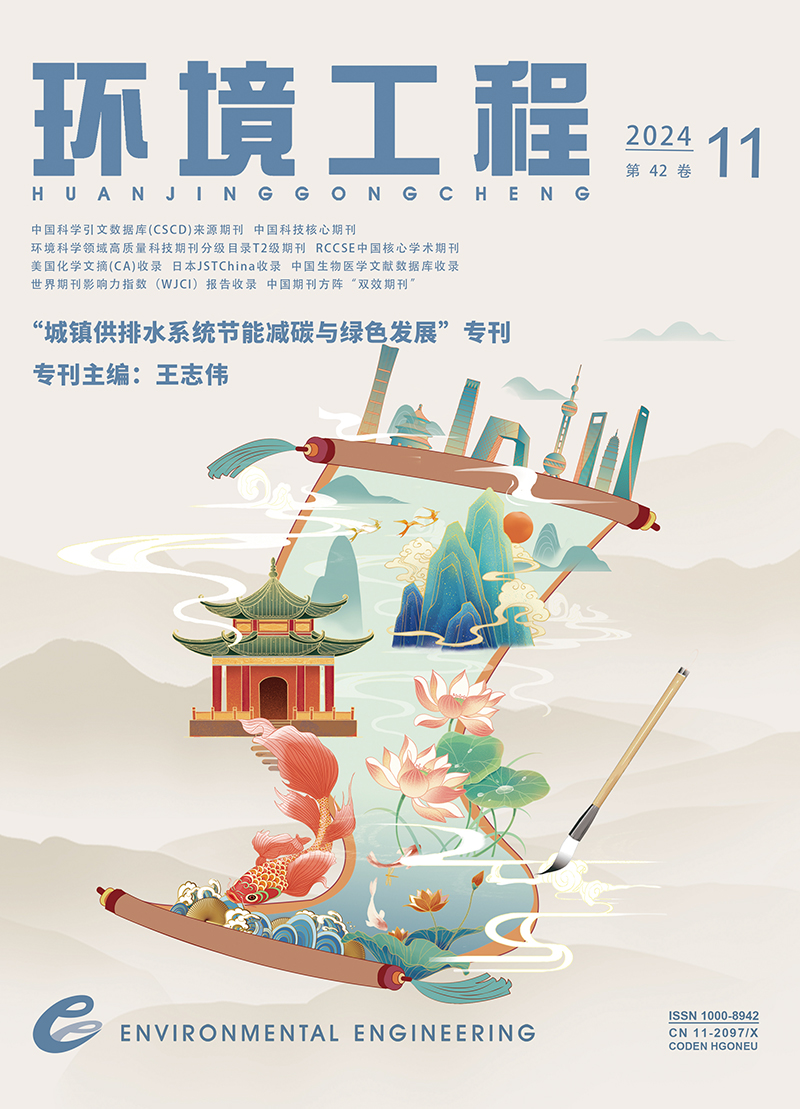| [1] |
YATEH M, LI F, TANG Y, et al. Energy consumption and carbon emissions management in drinking water treatment plants: a systematic review[J]. Journal of Cleaner Production, 2024, 437.
|
| [2] |
本刊编辑部. 《城乡建设领域碳达峰实施方案》出台[J]. 工程建设标准化, 2022(8): 49-50.
|
| [3] |
郭恰, 陈广, 马艳. 城市水系统关键环节碳排放影响因素分析及减排对策建议[J]. 净水技术, 2021, 40(10): 113-117.
|
| [4] |
任怡,周长胜.谈"双碳"目标下水务行业可持续发展与战略[J/OL].水利发展研究,1-7[2024-11-15
].http://kns.cnki.net/kcms/detail/11.4655.TV.20240620.1413.002.html.
|
| [5] |
翁晓姚. 碳达峰与碳中和目标下供水企业绿色低碳发展的思考[J]. 净水技术, 2022, 41(5): 1-4
,13.
|
| [6] |
刘然彬, 于文波, 张梦博,等. 城镇水务系统碳核算与减碳/降碳规划方法[J]. 中国给水排水, 2023, 39(8): 1-10.
|
| [7] |
邱勇, 刘雪洁, 石培培,等. 济南市污水处理厂碳排放特征分析[J]. 环境工程, 2023, 41(增刊2): 218-223.
|
| [8] |
刘跃廷,张强,蒋晓辉,等.西安市城镇污水系统碳排放时空特征及其主要驱动因素[J/OL].环境工程,1-18[2024-11-15
].http://kns.cnki.net/kcms/detail/11.2097.X.20230925.0936.006.html.
|
| [9] |
LI F K, ZHANG X Y, HUANG J L, et al. Greenhouse gas emission inventory of drinking water treatment plants and case studies in China[J]. Science of the Total Environment, 2024, 912:169090.
|
| [10] |
ZHANG P, MA B R, ZHENG G L, et al. Unveiling the greenhouse gas emissions of drinking water treatment plant throughout the construction and operation stages based on life cycle assessment[J]. Ecotoxicology and Environmental Safety, 2024, 272:116043.
|
| [11] |
MO W W, ZHANG Q. Modeling the influence of various water stressors on regional water supply infrastructures and their embodied energy[J]. Environmental Research Letters, 2016, 11(6):064018.
|
| [12] |
LI L, LEE G, KANG D. Estimation of Energy Consumption and CO2 emissions of the water supply sector: a Seoul Metropolitan City (SMC) case study[J]. Water, 2024, 16(3):479.
|
| [13] |
LAM K L, LIU G, MOTELICA-WAGENAAR A M, et al. Toward carbon-neutral water systems: insights from global cities[J]. Engineering, 2022, 14: 77-85.
|
| [14] |
KIM J, . Carbon emission evaluation of tap water[J]. Journal of the Korean Society of Water and Wastewater, 2011, 25(4): 511-517.
|
| [15] |
MO W W, WANG H Y, JACOBS J M. Understanding the influence of climate change on the embodied energy of water supply[J]. Water Research, 2016, 95: 220-229.
|
| [16] |
STANG S, WANG H Y, GARDNER K H, et al. Influences of water quality and climate on the water-energy nexus: a spatial comparison of two water systems[J]. Journal of Environmental Management, 2018, 218: 613-621.
|
| [17] |
WU L Y, PAN Y L, LI J F, et al. Spatial heterogeneity of factors affecting GHG emission intensity in urban water supply and wastewater treatment systems in China[J]. Journal of Cleaner Production, 2023, 428:139325.
|
| [18] |
张翔宇, 胡建坤, 马凯,等. 给水厂典型工艺碳排放特征与影响因素[J]. 环境科学, 2024, 45(1): 123-130.
|
| [19] |
KHALKHALI M, DILKINA B, MO W W. The role of climate change and decentralization in urban water services: a dynamic energy-water nexus analysis[J]. Water Research, 2021, 207:117830.
|


 Login
Login Register
Register E-alert
E-alert






 DownLoad:
DownLoad: